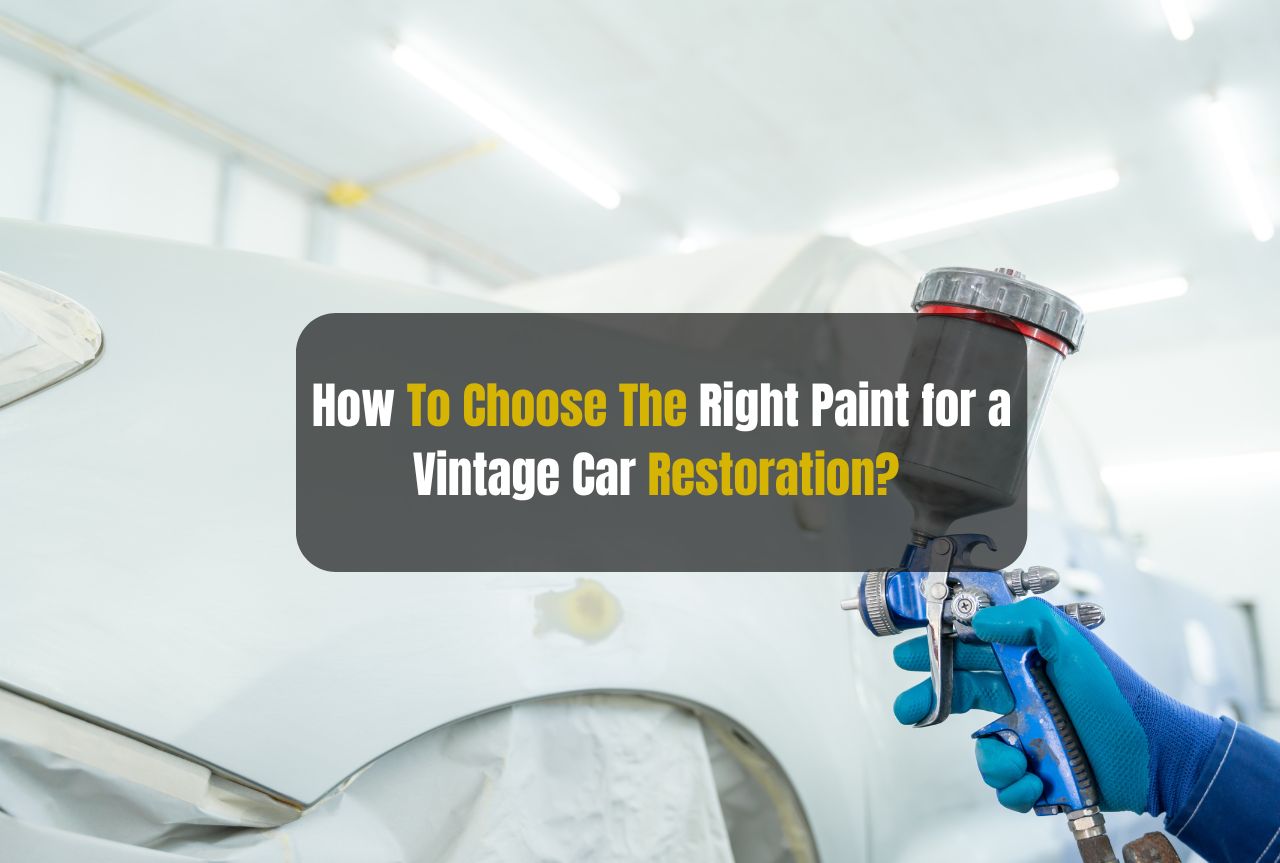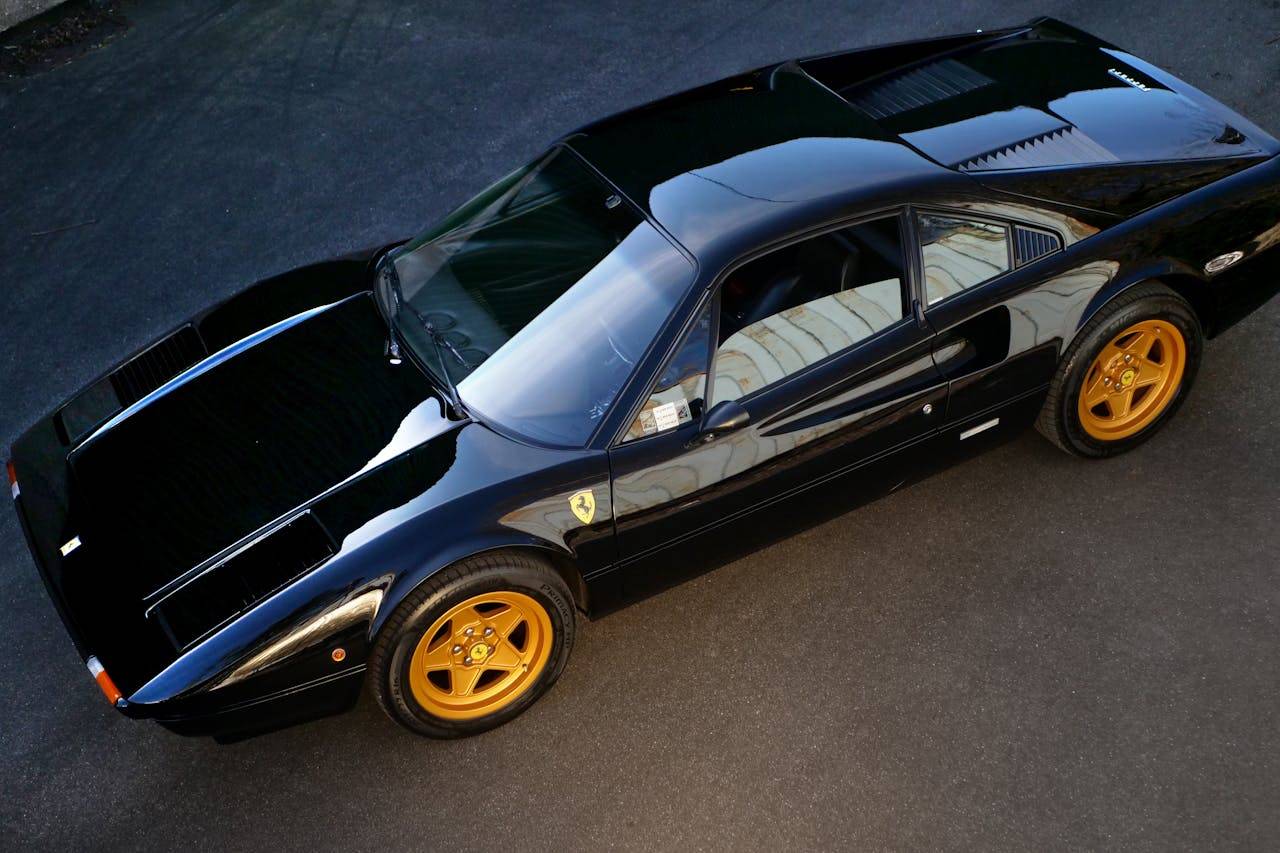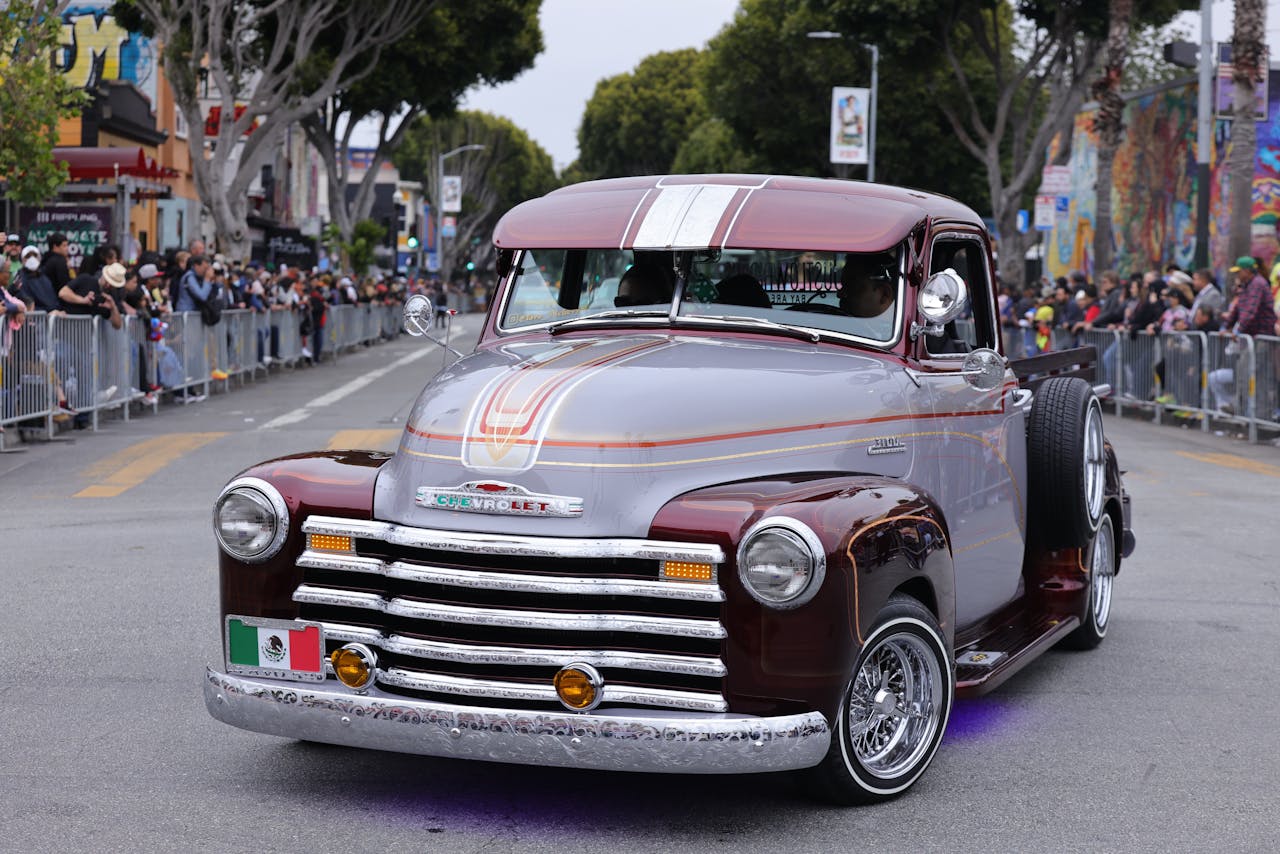Restoring a vintage automobile is a labor of love. You’ve poured your blood, sweat, and maybe even some tears into taking that old hunk of metal out of the weeds, blowing out the rodents, and injecting some life back into your project.
Now, all that’s left is the paint job your beloved classic needs to look its best once again. The paint you use on your vintage car is a critical part of the finished product in your restoration project, and there are a few things you’ll want to consider when selecting your paint options.
We will explore some of the most important issues to understand so you can make the correct decision for your project.
Understanding The Original Paint
It’s beneficial to find out as much as possible about the original paint: the color and type. Check the owner’s manual and service records if you can find them.
Factory cars had paint codes that were color-matched to a paint chart of a specific color family code. Car repaint references for your car’s year, make, and model are available online.
Taken together, be mindful of the type of car you have and the era in which it was built when you do your research. Vintage paint color may have become almost synonymous with a particular brand and design of an automobile.
A ’60s Mustang might look best in the classic Ford Blue, but a ’50s Chevy Bel Air might be more faithful in pastel.
Figure out how far you want to take the restoration based on the current condition of your paint. Is it orange peel or partially rusted? Is the car dented or otherwise damaged? If the existing paint is in fair shape, you can paint over it. If the paint is in terrible condition, you have first to remove it, which will take extra work and additional supplies.
Choosing the Paint Type
When you think about paints for classic cars, you will have several choices. Lacquer paint was commonly used on classic cars because it was relatively easy to apply and provided a high-gloss finish.
However, lacquer paint is not durable and can crack or chip as it ages. Compared to newer paints, it isn’t as reliable.
Many vintage car restorers also depend on enamel paint for its enduring qualities. An enamel finish is supposed to last the lifetime of your car and whatever colors it could have come in.
For a more modern look, urethane paint is popular with restoration aficionados. It is considered much more durable than enamel, has better color retention, and is more resistant to fading and chipping. It also comes in both water‑based and solvent-based forms.
Environmental and safety It mostly depends on the difference between using water-based paints and using solvent-based paints.
One reason why water-based paint might be chosen over solvent-based paint is because it not only generates a few volatile organic compounds (VOCs) but also is safer.
For safety measures, painting with solvent-based paint requires airing out windows and wearing masks.
Color Selection
The most exciting part of vintage car restoration is the selection of a color. Vintage vehicles should, for the sake of authenticity, be restored to their historic paint scheme.
Use the information you have gathered from your research as your guide toward choosing a color with the help of a professional classic car paint specialist.
If you are feeling flighty, opt for a custom color that reflects your fashion sense. A vintage car’s resale value can decrease with a custom color, especially if the color doesn’t match the one with which it originally strolled out of the showroom; collectors typically prefer the original margarine-suit color.
But if you plan to keep your vintage chariot for your riding pleasure, the sky’s the limit.
Choose a custom color that reflects the car’s overall vibe: do you want an elegant, understated aesthetic or a loud pattern? Deep jewel tones, metallic colors, and two-tone paint jobs that nod to the car’s original era can all be used for cool custom colors for vintage cars.
Paint Quality and Brand Selection
It’s worth spending the money on good paint – the better the paint quality, the longer your paint will last and the better it will look. Choose a highly durable paint that won’t fade, chip, or crack.
While the up-front costs are higher, high-quality paint means you won’t have to repaint your car as often – saving you money in the long run, not to mention a lot of work.
Experts also recommend paint brands for vintage car restoration work, such as PPG, Axalta, and House of Kolor, which all sell product lines geared toward classic cars for an easy and effective restoration process.
In addition to specialized brands, an important aspect to consider is the financial portion: How much of your required budget could you allot toward paint cost? Knowing what brand has the best quality and value for your pocket might be the key.
Surface Preparation
If you have a vintage car that you want to update, before you start applying the paint, do a very good job of preparing the surface. Remove any old paint and rust using chemical strippers or perhaps sandblasting or something else, and address any rust issues as best you can.
Then sand the entire item from side to side until you have a completely smooth, level surface, working through successive increasingly fine grades of sandpaper until the entire piece is fully sanded.
Follow with a high-quality primer that matches the paint type (gloss or flat).
Afterward, be sure to level and sand all dents, cracks, or other car-body imperfections until your surface is entirely smooth. You want to be confident that nothing is left amiss before you start painting.
Application Techniques
There are two main options that you can do to paint your classic car: spray painting and brush painting. Spraying painting is most commonly done.
The spray can make it easy to apply the desired design of the vehicle and let you get an even and smooth application. Also, it can minimize the risks of having brush marks on the car.
Another way of applying paint is to use a brush. This method is often used to create some patterns made of brush strokes. It’s easy to see where to apply pain because you do it with your brush.
But it’s easier to get a smooth ad application with a brush than with spray paint. Moreover, brush painting needs equipment and good air ventilation to create a comfortable workspace.
If you decide to go the spray paint route, you’ll get far better results if you spend the money on a decent spray gun and compressor. Find yourself someone to practice with – maybe some scrap metal or an old rusty Fender or two – so that you can get a feel for the equipment and learn from the mistakes of others.
For some minor touch-ups or if you are doing detail work, consider brush painting. Use high-quality brushes designed for automotive paint and apply the paint as evenly as possible so every brush stroke isn’t visible.
Regardless of the method, make sure to apply several coats, and be sure to wait between coats for the manufacturer’s recommended drying and curing times. And be prepared to be patient. Rushing the job will lead to a less-than-optimal job.
Clear Coat and Protection
Applying a clear coat after your classic car’s repaint, and indeed after nearly any sort of paint job, is crucial. A quality clear provides a shine, slickness, and depth that will protect the color and enhance its finished look. It will also resist UV rays, surface scratches, and abrasive contaminants.
Choose a high-quality and durable clear coat product that works with your base paint. Apply the clear coat using the same techniques you used to apply your base paint, making sure to create a smooth, even coat.
Then, after the clear coat has cured, simply wash and wax your vintage car regularly to maintain its newly refinished paint job while keeping those abrasive chemical cleaners and polishing machines away from your classic.
Final Thoughts
To choose the best paint for your vintage car restoration, you will have to consider many factors, including the color of your car originally and the type of paint it was painted with, as well as what paint options are available to you today. With good research, preparation, and execution, your classic car will look great for a long time.
One last time, a high-quality paint job on your vintage car is an investment in time and money to create the right appearance and the right value, so don’t shortchange the process – or yourself.
Take your time, get good advice when you need it, and follow all the procedures correctly. A beautiful finish requires patience, attention to detail, the right tools, and the right products.
FAQs
How much paint do I need for a vintage car restoration?
The amount of paint you will need will depend on the size of your car and how many layers you want to apply. Generally speaking, one gallon of paint will cover 100-150 square feet.
Can I mix different paint types on the same car?
Although you can combine finishes, it is best to avoid mixing paints. Different painting types require subtly varying application and curing times, so stick to one type of repaint throughout your upgrade.
What is the best way to store leftover paint for touch-ups?
Double-bag your leftover paint, label it well (name, color, type), and store it in a sealed container in a cool, dry place, out of direct sunlight.
How long does a high-quality paint job typically last on a vintage car?
Getting a nice paint job done by a pro with good materials can last 10-15 years or more if maintained.
Are there any special considerations for painting a convertible vintage car?
When painting a convertible, focus extra on panel borders where the top meets the body so that there won’t be an obvious line of demarcation. You can also note the color of the convertible top before you paint it so the color stays consistent.








Leave a Comment